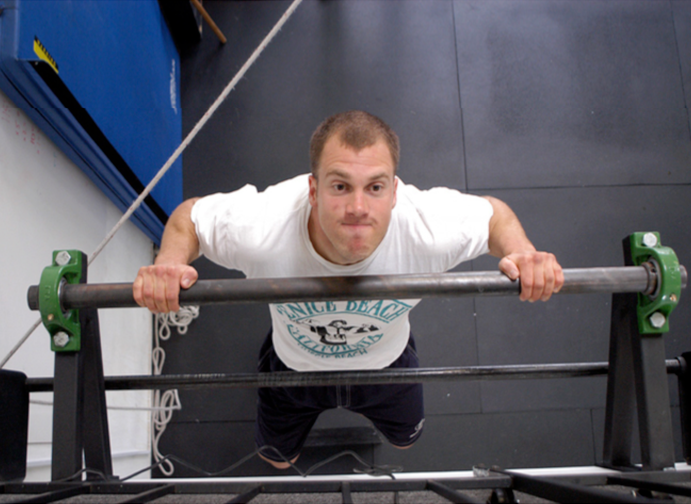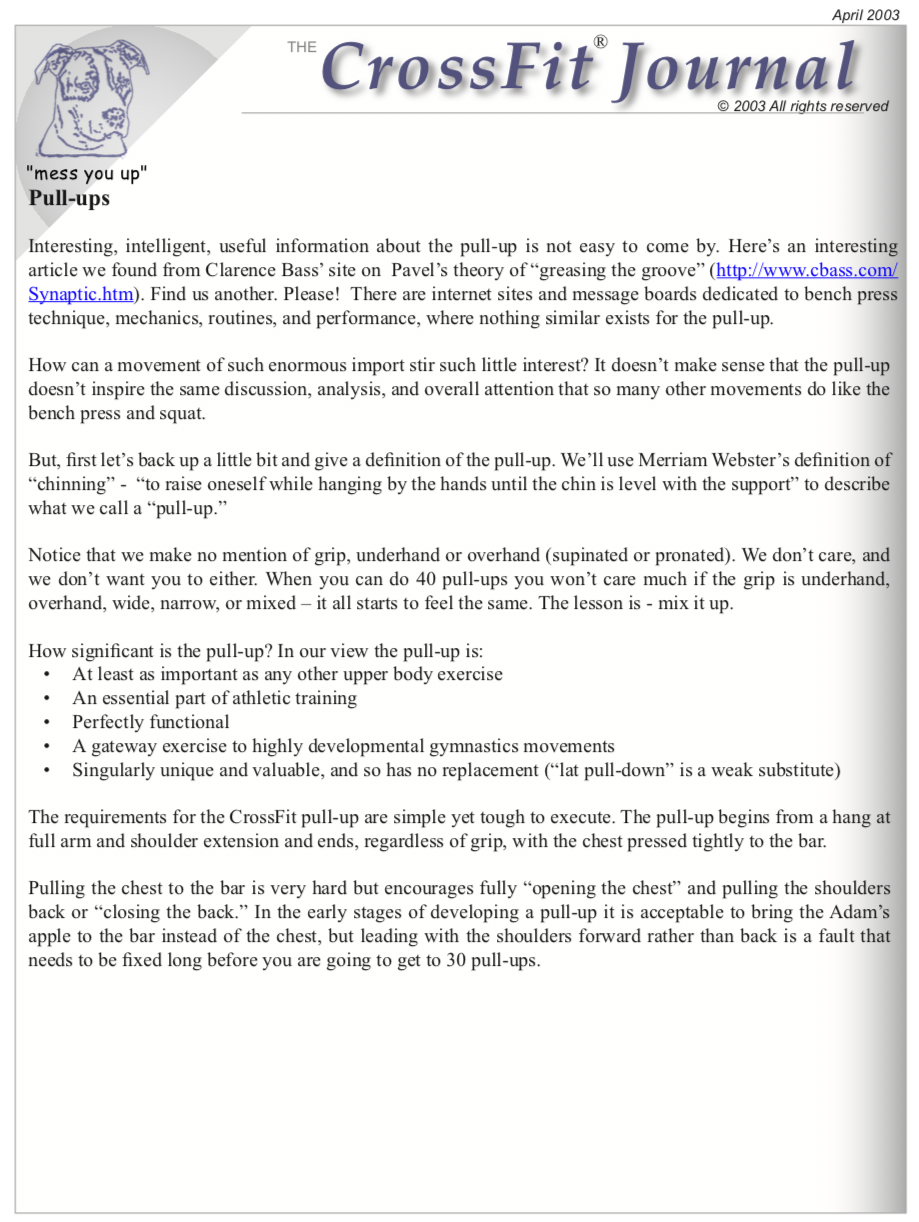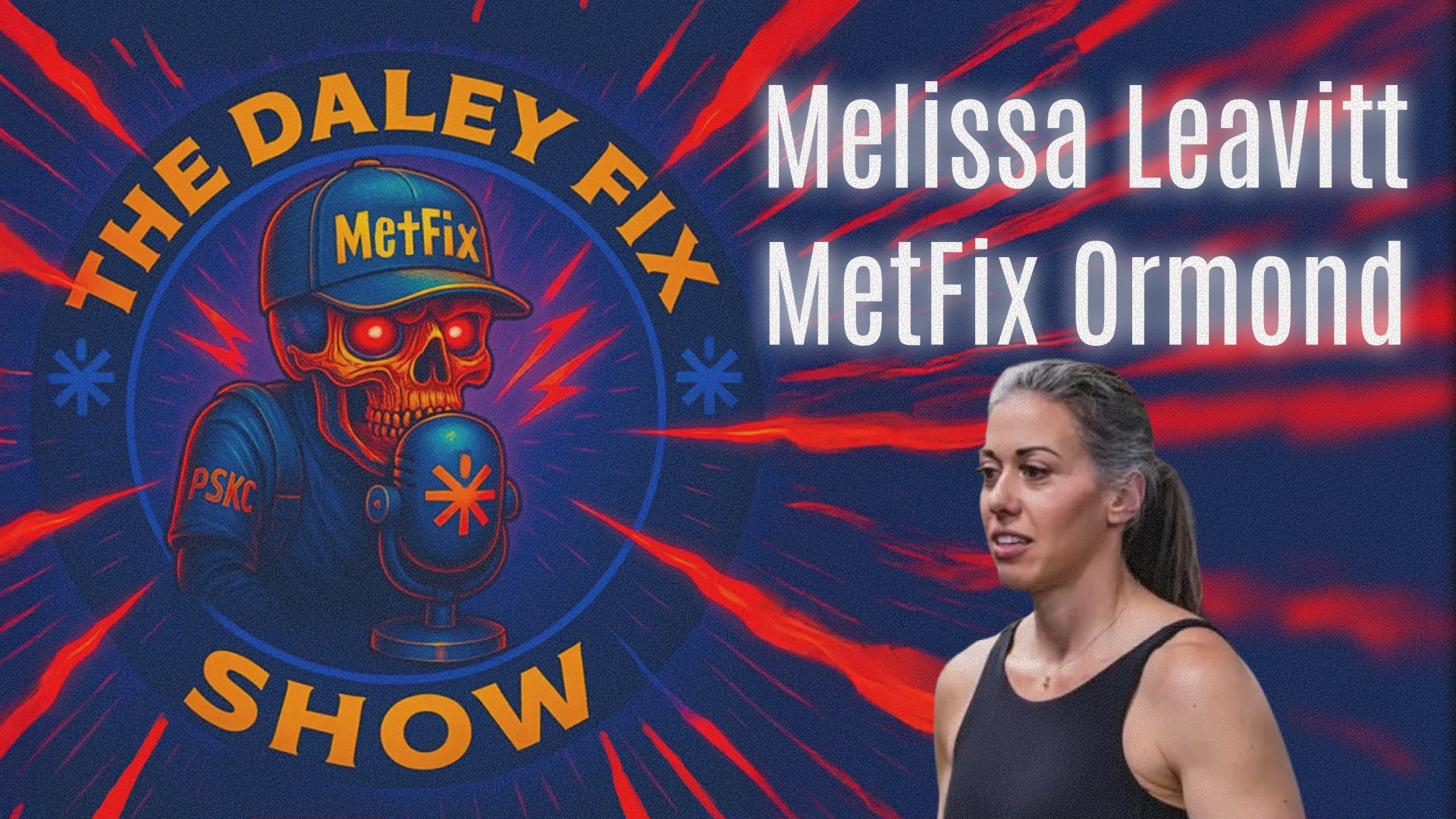Interesting, intelligent, useful information about the pull-up is not easy to come by. Here’s an interesting article we found from Clarence Bass’ site on Pavel’s theory of “greasing the groove.” Find us another. Please! There are internet sites and message boards dedicated to bench press technique, mechanics, routines and performance, where nothing similar exists for the pull-up.
How can a movement of such enormous import stir such little interest? It doesn’t make sense that the pull-up doesn’t inspire the same discussion, analysis and overall attention that so many other movements do like the bench press and squat.
But, first let’s back up a little bit and give a definition of the pull-up. We’ll use Merriam Webster’s definition of “chinning”—“to raise oneself while hanging by the hands until the chin is level with the support”—to describe what we call a “pull-up.”
Notice that we make no mention of grip, underhand or overhand (supinated or pronated). We don’t care, and we don’t want you to either. When you can do 40 pull-ups you won’t care much if the grip is underhand, overhand, wide, narrow or mixed—it all starts to feel the same. The lesson is—mix it up.
How significant is the pull-up?
In our view the pull-up is:
- At least as important as any other upper-body exercise
- An essential part of athletic training
- Perfectly functional
- A gateway exercise to highly developmental gymnastics movements
- Singularly unique and valuable, and so has no replacement (“lat pull-down” is a weak substitute)
The requirements for the pull-up are simple yet tough to execute. The pull-up begins from a hang at full arm and shoulder extension and ends, regardless of grip, with the chest pressed tightly to the bar.
Pulling the chest to the bar is very hard but encourages fully “opening the chest” and pulling the shoulders back or “closing the back.” In the early stages of developing a pull-up it is acceptable to bring the Adam’s apple to the bar instead of the chest, but leading with the shoulders forward rather than back is a fault that needs to be fixed long before you are going to get to 30 pull-ups.
Technically correct pull-ups:
- Go from full hang to chest pressing tightly to the bar
- Lead with the chest up and shoulders way back
- Are visually directed, that is, a sight line is chosen that is shortened as the body rises to the bar
- Synchronize respiration to the pull-up: inhale down, exhale up
- Are motivated by trying to drive the elbows down to the ground, not by trying to flex the arm!
Nearly any surface on which you can get even a fingertip hold and hang is a potential platform for pull-ups, but for regular practice you need a pull-up bar, for which there are several options.
We’ve had Nick Massman build several pull-up bars for us including our thick-handled, rotating pull-up bar. We recommend that you either get a bar from Nick or have a local welder build you a bar that can be permanently mounted to either the wall or a conveniently located overhead beam. The freestanding pull-up and dip towers are by contrast relatively unstable and take up too much valuable floor space for any but the largest facilities.
On the thick-handled rotating pull-up bar
Loyd (left)—underhand grip, Greg (right)—overhand grip.
The thick-handled, rotating pull-up bar is a grip and forearm developer of the first order. Just hanging from this beast makes you a believer. Your grip doesn’t slowly weaken, you just find yourself in free fall.
For road trips and apartment dwellers without garages there are several really cool doorway pull-up bars (and dip bars) that will provide excellent service. The best of them require no hardware for installation.
Developing Pull-Ups
For those unable to perform a pull-up (or dip) there are several options. The best option is a pull-up and dip assistance device like StairMaster’s Gravitron 2000. Sadly, Stairmaster quit making the Gravitron recently, but internet-savvy folks can still find some, new and used. Though this option is best, it is also the most expensive. A new Gravitron is over $2,000 but worth every penny. We have two. There are other manufacturers but the Gravitron is our favorite.
Our second choice is to tie the ends of several lengths of “theraband” to your bar, leaving a loop that hangs down to about mid-thigh. By stepping into the loops and experimenting with the number of therabands, you can develop a natural spotting technique that is inexpensive, simple to build and assists along functional lines of movements. This method is, though, fraught with one rather significant complication. If the bands are allowed to slip from the foot there exists the possibility of the bands snapping up and seriously injuring the eye. If you adopt this method, keep your head up; don’t look at the bands. Otherwise wear protective goggles!
The third choice for assisting pull-ups is the manual spot. This method requires a friend to stand close behind you and grab your sides and mid-back and to squat and press in synchronization to your efforts. This is an especially great technique with large groups broken into pairs. The athlete being assisted is engaged in one of the world’s best pulling movements and the spotter is engaged in a classic bit of hip extension and push. Between both efforts the activity is whole body and very complete. Competing teams racing toward 100 pull-ups combined per team is fantastic work.
The goal in your pull-up work is “more.” You want, you need more pull-ups. The more you can do, the stronger you become. Muscular endurance, absolute strength, relative strength, whatever you want to define and measure gets better.
With the goal being high reps, regular exposure is critical. We placed both the Better Warm-up article and the Pull-up article as a two-front effort to encourage more frequent fundamental bodyweight movements (and better warm-ups) in all our athletes. Gymnastic movements are eventually well tolerated at frequencies never recommended for weight-training exercises.
We’ve known athletes to hang a pull-up bar in the bathroom doorway and obligating themselves to performing 10 pull-ups every time they came out. It works. A rugby-player friend performed a max set of pull-ups for every beer he drank and managed to stay drunk and arrive at 30 pull-ups. We recommend incorporating the pull-up into your warm-up routine. Try not to favor a grip. If there is a discrepancy in your number with the overhand versus the underhand grip, give emphasis to the weaker grip. With increasing competency the difference between the two grips in feel, muscle recruitment and development approaches zero.
Every personal best pull-up is an event worthy of celebration. You’re going to live to be 100 but you’ll not get that many pull-ups, so treat the new ones like birthdays.
This article, by BSI’s co-founder, was originally published in The CrossFit Journal. While Greg Glassman no longer owns CrossFit Inc., his writings and ideas revolutionized the world of fitness, and are reproduced here.
Coach Glassman named his training methodology ‘CrossFit,’ which became a trademarked term owned by CrossFit Inc. In order to preserve his writings in their original form, references to ‘CrossFit’ remain in this article.
Greg Glassman founded CrossFit, a fitness revolution. Under Glassman’s leadership there were around 4 million CrossFitters, 300,000 CrossFit coaches and 15,000 physical locations, known as affiliates, where his prescribed methodology: constantly varied functional movements executed at high intensity, were practiced daily. CrossFit became known as the solution to the world’s greatest problem, chronic illness.
In 2002, he became the first person in exercise physiology to apply a scientific definition to the word fitness. As the son of an aerospace engineer, Glassman learned the principles of science at a young age. Through observations, experimentation, testing, and retesting, Glassman created a program that brought unprecedented results to his clients. He shared his methodology with the world through The CrossFit Journal and in-person seminars. Harvard Business School proclaimed that CrossFit was the world’s fastest growing business.
The business, which challenged conventional business models and financially upset the health and wellness industry, brought plenty of negative attention to Glassman and CrossFit. The company’s low carbohydrate nutrition prescription threatened the sugar industry and led to a series of lawsuits after a peer-reviewed journal falsified data claiming Glassman’s methodology caused injuries. A federal judge called it the biggest case of scientific misconduct and fraud she’d seen in all her years on the bench. After this experience Glassman developed a deep interest in the corruption of modern science for private interests. He launched CrossFit Health which mobilized 20,000 doctors who knew from their experiences with CrossFit that Glassman’s methodology prevented and cured chronic diseases. Glassman networked the doctors, exposed them to researchers in a variety of fields and encouraged them to work together and further support efforts to expose the problems in medicine and work together on preventative measures.
In 2020, Greg sold CrossFit and focused his attention on the broader issues in modern science. He’d learned from his experience in fitness that areas of study without definitions, without ways of measuring and replicating results are ripe for corruption and manipulation.
The Broken Science Initiative, aims to expose and equip anyone interested with the tools to protect themself from the ills of modern medicine and broken science at-large.
Support the Broken Science Initiative.
Subscribe today →
recent posts
Medical Society Webinar with David Wiss










